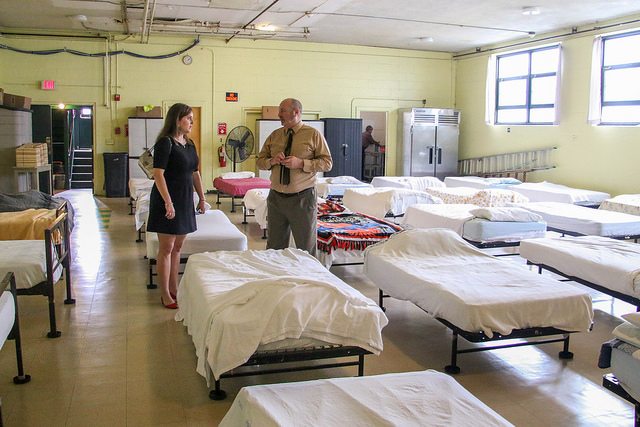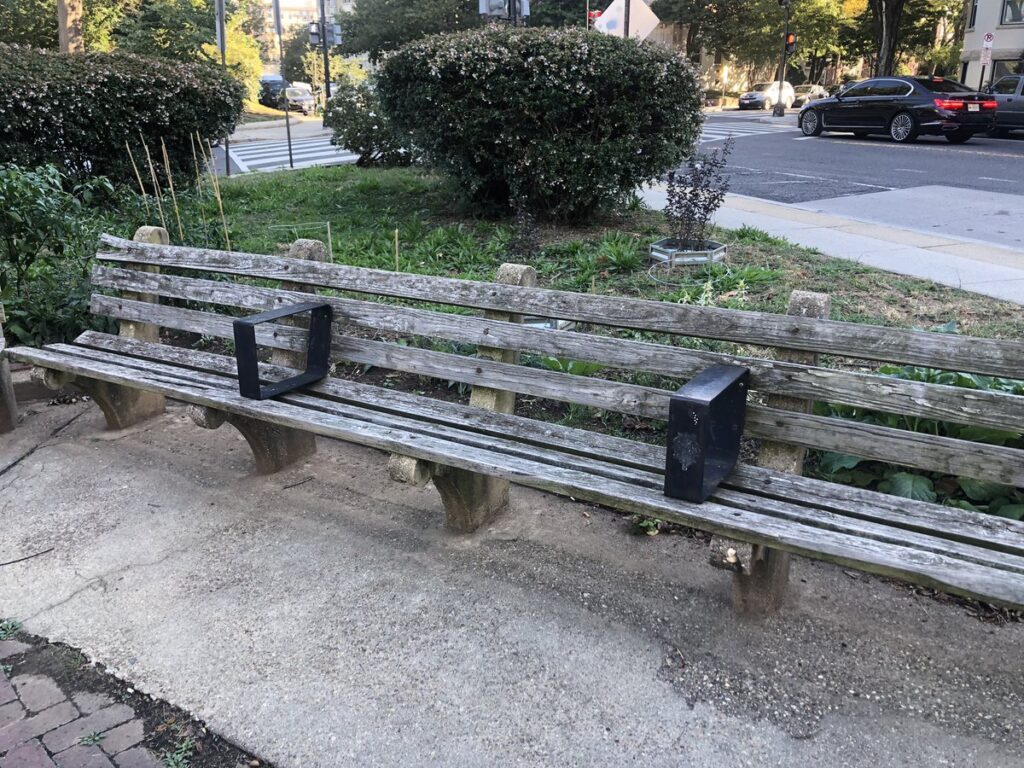There about 1,300 beds and a lot of history in the cavernous and crumbling Federal City Shelter.
But if you ask Chapman Todd, something far better for the homeless could rise at Second and D streets NW.
“We have the possibility to do something great,” said Todd formerly of Catholic Charities, now a supportive and affordable housing consultant who works with organizations including the Downtown DC Business Improvement District.
The place, the former Federal City College, has served the city’s indigent for nearly three decades now. In the winter of 1983, at a time when hunger strikes, occupations and encampments were bringing attention to the nation’s growing homeless crisis, the building was turned over to the late advocate Mitch Snyder and a band of fellow activists from the Community for Creative Non-Violence (CCNV) for use as a shelter. In 1984, President Ronald Reagan ordered the renovation of the facility and with the completion of the $14 million project four years later, the Federal City Shelter was declared the nation’s largest and most comprehensive facility of its kind.
These days, the shelter is often referred to simply as Second and D or as CCNV, the initials of its largest and longest-running tenant. But the building also houses two other shelter programs, Open Door and John Young as well as other assistance organizations: Unity Health Care, Clean and Sober Streets and DC Central Kitchen.
And years of hard use have left the District-owned building “in rough shape” as Todd observed. The aging structure is huge and hard to maintain: at four stories tall, it encloses an area of 200,000 square feet. An adjacent surface parking lot on the site, and a smaller arts and education building are owned by CCNV. All said, the property covers the better part of a city block of prime downtown real estate.
Under Todd’s plan, the city would sell the building and the proceeds would be used to build a new facility on the vacant property owned by CCNV. The new place would be large enough to include an emergency shelter with hundreds of beds, as well as hundreds of units of permanent supportive housing and congregate housing geared to helping homeless people stabilize their lives.
“There is a possibility to put something together that is self-financing and self-sustaining,“ Todd explained to a group of housing and homeless advocates, gathered for a recent meeting of the Coalition of Housing and Homeless Organizations. “This is an incredible opportunity”
He stressed that to move forward, any plan for the property will require much deeper discussion, involving the city as well as homeless people and their advocates.
“Its important to have it be a community conversation. Ultimately, this will be something the district government decides to move forward with or not.”
At the COHHO meeting, homeless advocate Cheryl Barnes said that the needs of the hundreds of men and women now staying at the Federal City Shelter should be taken into consideration as any plan for the site progresses.
“Change needs to come to CCNV,” Barnes said.“ But there should be no harm or displacement to the people who are there now.”
Beyond the COHHO meeting, talk about new plans for the site are also creating a buzz.
“The core issue at this point is not what the specific building plan is. The issue is that the homeless want a say in what the building is repurposed for,” said Will Merrifield, of the Washington Legal Clinic for the Homeless. “That’s the conversation that we need to be having right now. The specifics are still down the line.”
A development plan for the Federal City Shelter site is not currently under discussion said a staff person at the office of the Deputy Mayor for Planning and Economic Development
But, she added, “it doesn’t mean it won’t be in the pipeline in the future.”
Homeless advocate Eric Sheptock, who lives at the CCNV shelter hopes for a day when the homeless themselves will be employed as construction workers, building something new on the site.
“We would have to get with developers and make sure they will provide job training for homeless individuals so they could then be hired to construction teams,” he said.
“I want to make sure we (the homeless) are the first ones to get involved with this before some contractor comes in and grabs it. We need to be a part of building this.”








